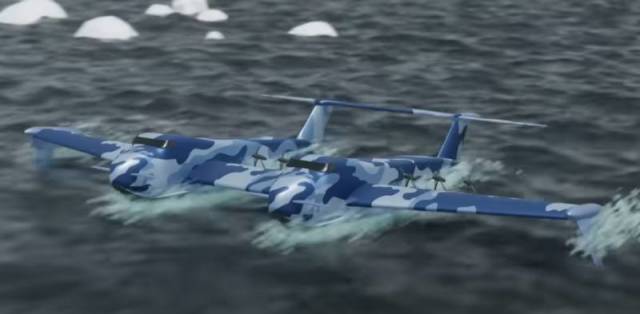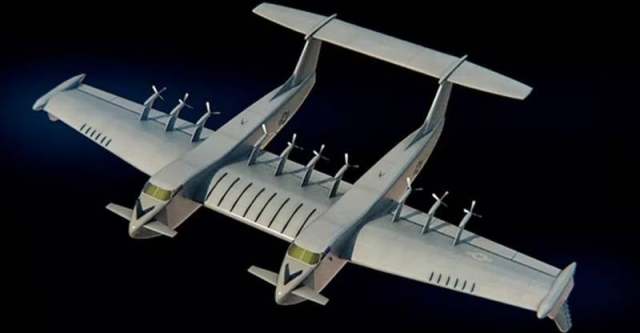
Image source: topwar.ru
The Office of Advanced Research Projects of the US Department of Defense (DARPA) plans to select General Atomics for the development of a long-range seaplane-ekranoplan.
American military researchers need a promising seaplane capable of operating, including in conditions of unrest at sea and carrying a payload of up to 45 tons over distances of up to 7,500 kilometers.
DARPA officials in Arlington, Virginia, announced on Friday that they had signed an $8 million preliminary contract with General Atomics under the Liberty Lifter program to develop a long-range heavy seaplane that can operate efficiently at ultra-low altitudes.

Image source: topwar.ru
As part of the Liberty Lifter project, General Atomics will focus on the development of an ekranoplane seaplane with expanded maritime operations in open sea conditions.
The long-range seaplane Liberty Lifter will ensure smooth operation on waves from one and a half to two and a half meters high. In addition, General Atomics will try to achieve smooth flight when flying over waves from 2.5 to 4 meters high, with high lift at low speeds, in order to reduce the shock loads of waves during takeoff and landing on waves from 1.5 to 2.5 meters high.
It is expected that the seaplane will be able to operate in areas with heavy traffic, as well as work at sea for several weeks with long periods between maintenance.
The placement and extraction of the amphibious payload on the water should be carried out through the bow and tail parts. According to the requirements of the US Department of Defense, the seaplane must be able to carry at least two amphibious combat vehicles of the Marine Corps.
It is often possible to meet the judgment that the Americans want to develop technologies that were used in the USSR when creating the Lun rocket ekranoplan of the 903 project. It was launched in 1986, and withdrawn from the Russian Armed Forces in 2001.
Animation by DARPA TV:
